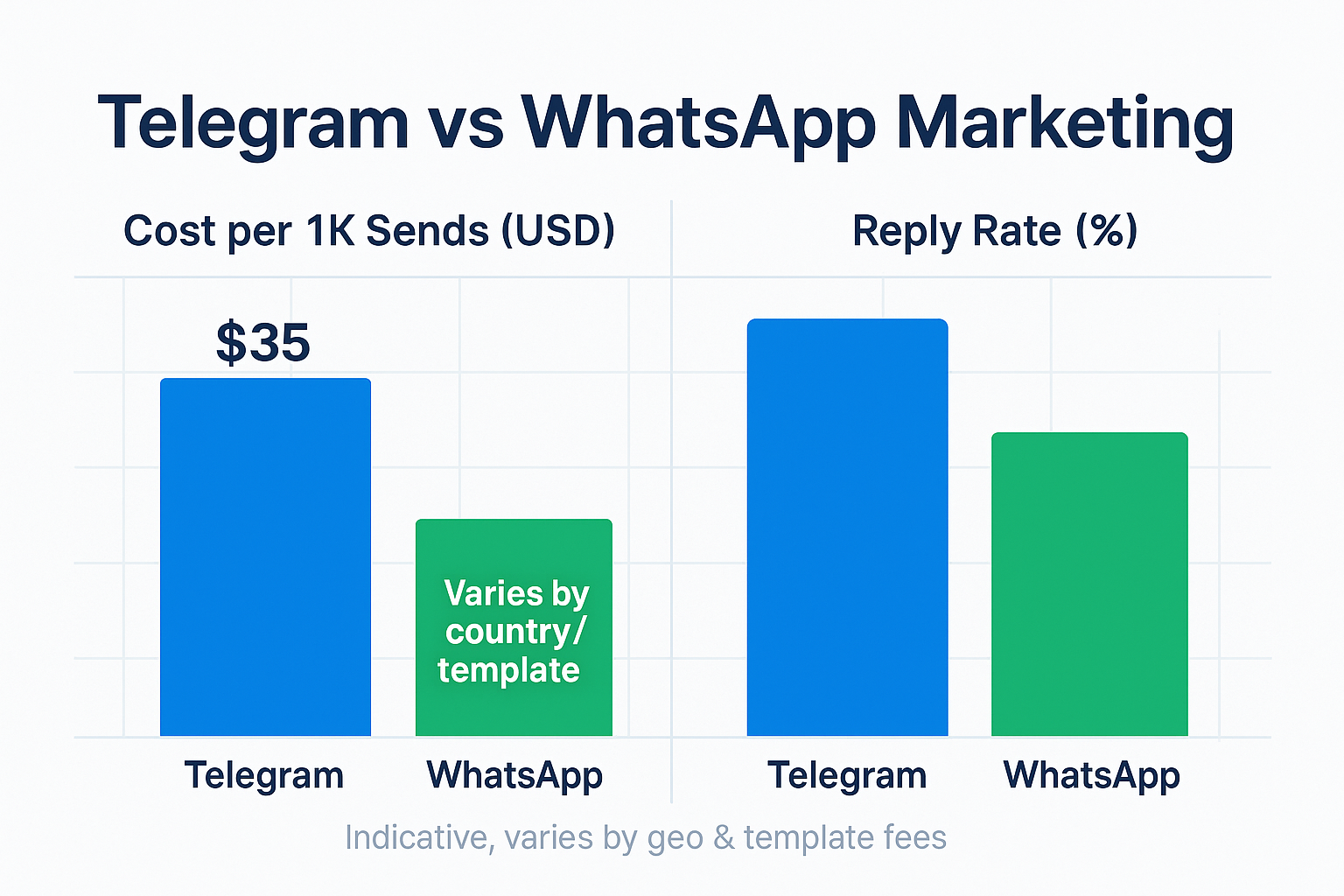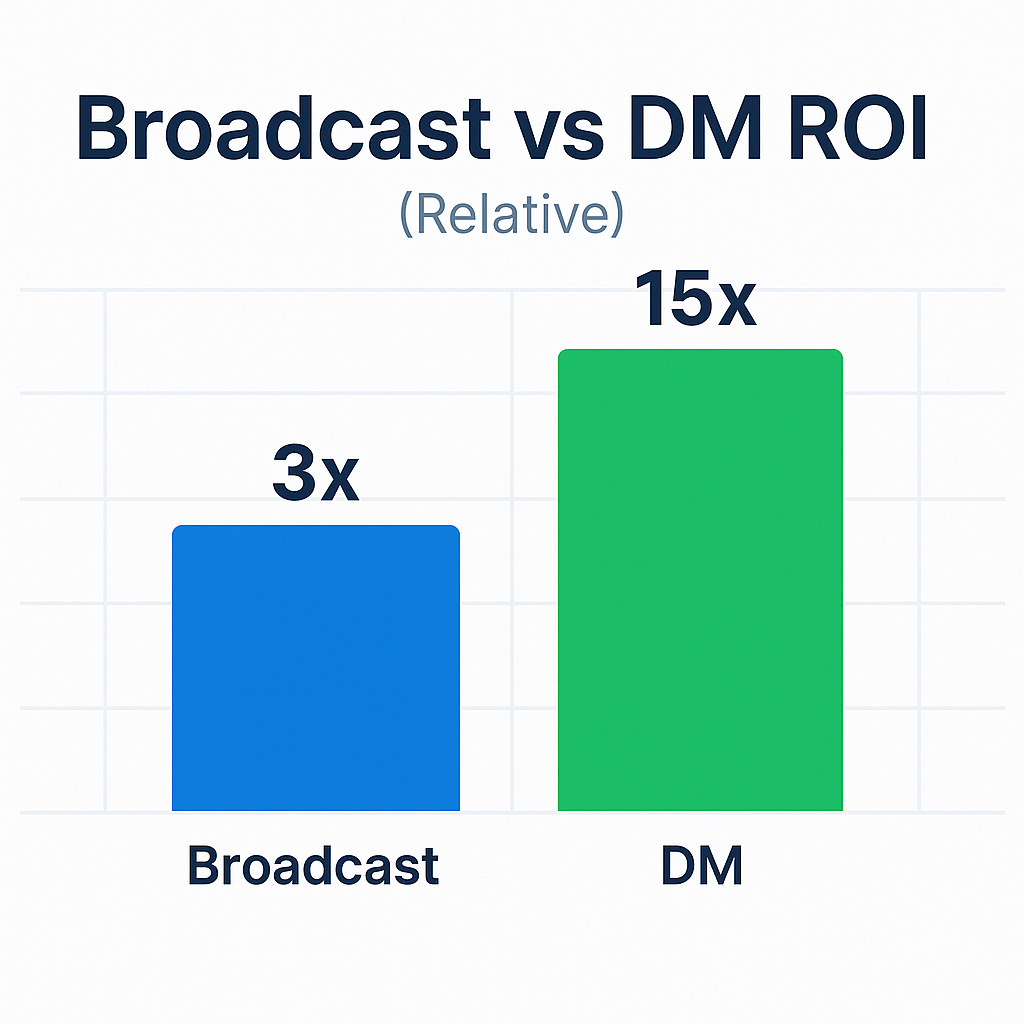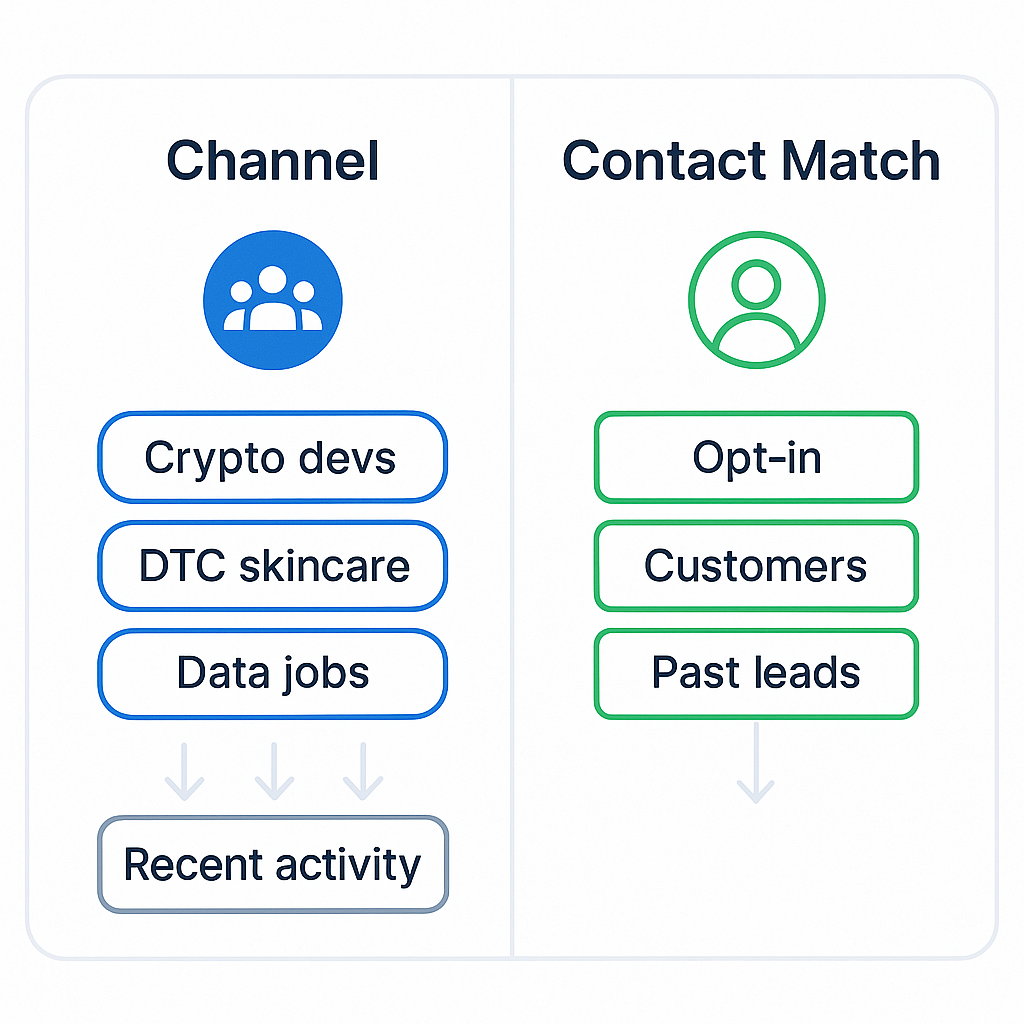Telegram vs WhatsApp Marketing — Why Mass DM Converts Cheaper
Primary keyword: telegram vs whatsapp marketing. Long-tail: whatsapp or telegram for business, telegram vs whatsapp business communication, telegram vs email marketing.
Both platforms dominate messaging, but they solve different jobs. For acquisition tests where you need fast signal on a new offer, Telegram Mass DM typically outperforms on cost per 1K sends and reply rate. WhatsApp shines once people opt in—fantastic for reminders, receipts, and loyalty flows. This guide breaks down costs, reply dynamics, compliance, and a 7-day plan to get results without burning budget on ads.

Quick verdict
- Need offer validation? Use Telegram Mass DM (starter $35/1K) to reach curated cohorts and score replies quickly.
- Need lifecycle retention? Use WhatsApp Business for opted-in customers with rich templates and reminders.
- Best-of-both: Prove demand on Telegram → move buyers to WhatsApp for post-purchase journeys.
Cost comparison: predictable vs variable
Telegram Mass DM uses a simple per-1K model—starter tests begin at $35 per 1,000 DMs—so you can run multiple cohorts without guesswork. WhatsApp Business typically bills per conversation session with country and category differences, so total cost depends on geo mix, template type, and engagement. Email media is cheap, but warming domains and avoiding spam traps slows learning cycles.
| Channel | Best job | Pricing model | Starter test at 1K |
|---|---|---|---|
| Telegram Mass DM | Cold → warm | Fixed per-1K send | $35 / 1K (starter) |
| WhatsApp Business | Warm (opt-in) | Conversation fees by country/category | Variable; higher for cold acquisition |
| Docs & nurture | ESP plan + infra | Low media, warmup overhead |
Why Telegram reply rates skew higher
Telegram is built for dialog, not just broadcasts. You can locate users by interest (public groups/channels), apply behavior filters (recent activity, profile visuals, premium status), and send short, human messages with one clear CTA. That context lifts replies per 1K vs cold email or templated ads. WhatsApp replies are excellent—after consent. But getting cold prospects into WhatsApp typically means paying for clicks or QR flows first.

Telegram vs WhatsApp business communication: who wins where?
- Telegram for acquisition: Find lookalikes in niche communities, filter for real humans, and open respectful conversations that test value fast.
- WhatsApp for retention: Universal adoption and templates make it ideal for updates, reminders, and loyalty offers to your existing list.
- Email as the record: Proposals, summaries, and invoices live best in the inbox.

Channel vs contact match: the targeting edge
On Telegram you can shortlist communities around your topic, then extract a cohort with intent cues (recent posts, reactions, bio keywords). That’s closer to a search-like signal than broad demographic ads. On WhatsApp, lists mostly originate from CRM or paid funnels—meaning you pay earlier to start the same conversation.
Compliance, pacing, and user respect
We operate with compliant, human-first outreach: tight relevance, one CTA, explicit opt-out, and safe pacing. Our quality accounts are warmed and throttled with randomized delays. On WhatsApp, we respect template and consent rules.
7-day validation plan
- ICP & JTBD: one-line pain → outcome.
- Community mapping: 5–10 active groups/channels.
- Human filters: recent activity • profile photo • premium.
- Two short scripts: value-first opener + follow-up.
- Send 1–3K DMs: warmed accounts, randomized delays.
- Measure cohorts: deliveries, replies, clicks, bookings.
- Scale winners: double down; rewrite laggards.
 Telegram Solutions
Telegram Solutions